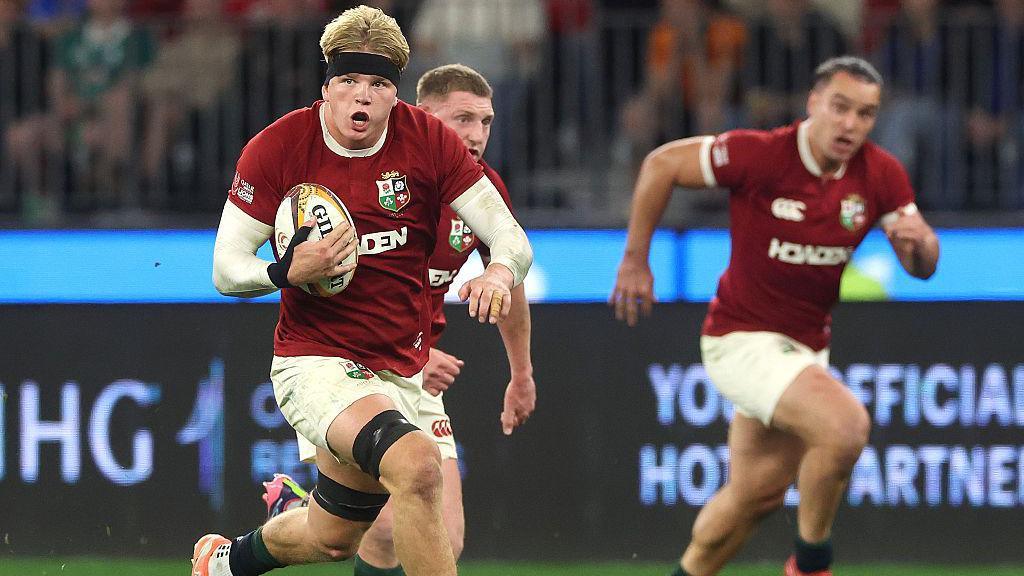 Image source, Getty Images
Image source, Getty Images
Pollock started the season on the bench for Northampton Saints, but is in contention for a place in the Lions Test squad
BBC Sport rugby union news reporter
Australia and New Zealand Invitational XV v British and Irish Lions
Date: Saturday, 12 July Kick-off 11:00 BST Venue: Adelaide Oval
Coverage: Live text commentary on the BBC Sport website and app
Ardie Savea doesn't watch much northern hemisphere rugby, but he had seen enough.
"The main thing I got out of it was how good Henry Pollock is," said the New Zealand back row after the British and Irish Lions squad was named., external
"Shout out to my brother because he represents the light loose forwards man.
"For so long and still now, there is that connotation of loose forwards having to be big, and he is proving it wrong once again with the way he plays."
Pollock is certainly light by the standards of modern-day forwards. He tips the scales at 105kg (16st 8lb), a balsa-wood frame amid heavy lumber elsewhere.
Like Savea though, he also has dazzling speed.
At full pelt, Pollock clocks around 10 metres a second - the sort of speed normally associated with pacier backs. And he can replicate those bursts again and again.
His Bronco time - a standard shuttle-run fitness test - is a punchy four minutes 25 seconds. Gloucester and England centre Seb Atkinson's time of 4:08 is elite rugby's unofficial record.
Whenever the Lions break the line, Pollock's blond mane is invariably not far behind.
"I found his engine, his ability to go and go and go, just incredible," Jason Sivil, part of Northampton's strength and conditioning team, told the Telegraph of Pollock in April., external
There is athleticism in the genes. Pollock's older sister Zoe is a 400m hurdler on the competitive college circuit in the United States. His mother Hester competed in triathlon at a high level.
But there is also a change in the game. What it is to be a back row is morphing.
When Pollock made his England debut off the bench against Wales in March, the starting trio ahead of him - Ben Earl and identical twins Ben Curry and Tom Curry - had all played most of their rugby as open-side flankers.
"The thing you are seeing around the park is speed wins," said Earl in the week building up to the match.
"We are talking a lot about moving the ball, being aggressive, outworking teams. Our players buy into that."
When the Lions toured New Zealand in 2017, the All Black management were encouraging Savea to bulk up to 106kgs., external
Now, the 31-year-old, playing some of the best rugby of his career, is at 99kg (15st 8lb) - a similar weight to when he was a teenager.
Ireland's Josh van der Flier, who preceded Savea as World Player of the Year and is touring alongside Pollock, has similarly lost weight, but gained influence on the pitch.
"There was a stage I was a bit heavier - three or four kilos more than now - and I kind of lost what I was good at," he told BBC Sport.
"I wasn't heavy enough to be a big, brute force, and was too heavy to be light and explosive around the place.
"For me it has been about trying to find the ways I can be effective.
"To play the way that Andy [Farrell, Lions head coach] plays the game suits me and the likes of Henry, Tom Curry (110kg, 17st 5lb), Jac Morgan (105kg, 16st 8lb) - they are all very dynamic players and deceptively strong as well."
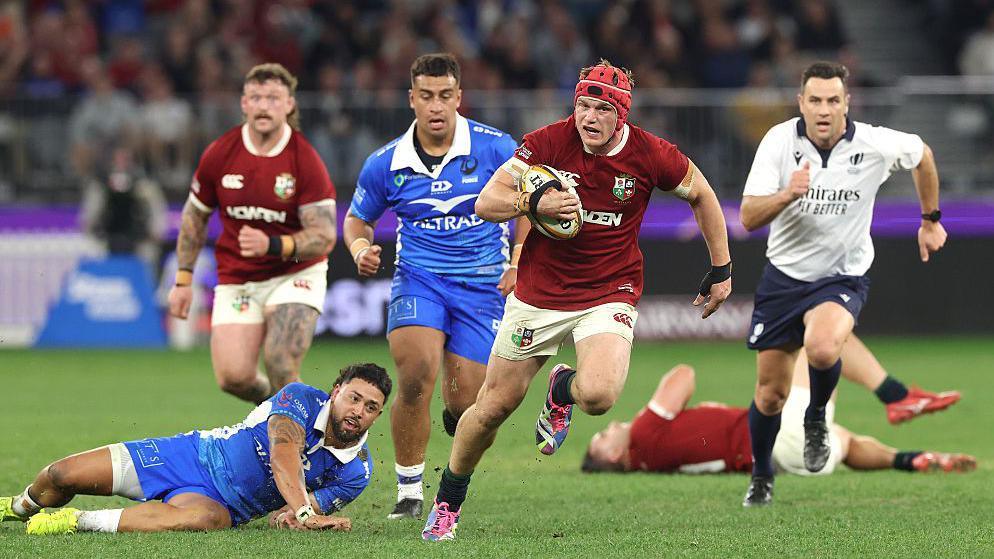 Image source, Getty Images
Image source, Getty Images
Van der Flier, on his first Lions tour, scored tries against New Zealand, Australia and Fiji in Ireland's autumn campaign
The average weight of the specialist back rows picked for the Lions squads has dropped over the past three tours.
In 2017, the fleet feet of Justin Tipuric were counter-balanced by the bulk of Billy Vunipola.
Taulupe Faletau's power combined with Hamish Watson and Sam Simmonds' pace in 2021.
This time around the range between the heaviest back row, Curry, and the lightest, Earl (102kg, 16st 1lb), is smaller.
Their duties have multiplied though.
Looking at data from the Six Nations and Rugby Championship since 2021, the average number of carries by a back-row player has slightly, but steadily increased.
This year it is at 9.6 per game, compared to 8.6 five years ago.
There has been no let up in their defensive efforts either.
And, roaming wide and fast, the battle of the breakdown is falling heavier than ever on their shoulders.
They like, players in every position, are also being asked to dig deeper into their reserves of stamina with ball-in-play time edging upwards as part of conscious drive to improve the game by World Rugby.
Taking a longer view all those figures are significantly higher than they were in preceding decades.
Opta's analysis of Rugby World Cup tournaments, external shows an average ball-in-play time of less than 32 minutes in 2003, and just over 28 minutes at the inaugural 1987 edition.
Phil Dowson, Pollock's director of rugby at Northampton, was a back row himself, with a 16-year top-flight career and seven England caps to his name before he moved into coaching.
He cites former Wallabies David Pocock and Phil Waugh, England's Neil Back and ex-Harlequins flanker Will Skinner as back rows of yesteryear who excelled despite lacking the heft.
"All those were athletic, maybe not as much as Henry Pollock, but they would have created a ton of turnovers and covered a lot of ground," he told BBC Sport.
"But perhaps we are in a cycle at the moment with the increased amount of ball in play - I think naturally that will drop the weights of people because you can't keep moving if you are a big unit.
"I think that is key to the athleticism and weight of some of the guys.
"There have been loads of horror stories about players being repeatedly told to bulk up and then either got injured or couldn't move around as they wish or lost that key attacking threat.
"We are conscious of that and finding that balance between power and speed is incredibly important."
Lions head coach Farrell, who has picked Pollock, Morgan and Earl as the back row for their final pre-Test series warm-up game, has his own balance to strike.
Australia have their own fast-forward fetcher in the excellent Fraser McReight. Yet Will Skelton (135kg, 21st 4 lb) and Rob Valetini (117kg, 18st 6lb) also loom as heavyweight Wallaby forward options.
Does Farrell add ballast to his back row by including Ollie Chessum, more usually a second row, to counter their direct threat?
Or does he go for a warp-speed selection that runs the legs off the Wallabies and prioritises a breakdown battle the Lions have struggled to master so far?
Spoil a tactic or follow a trend? His choice will be fascinating.

 8 hours ago
1
8 hours ago
1


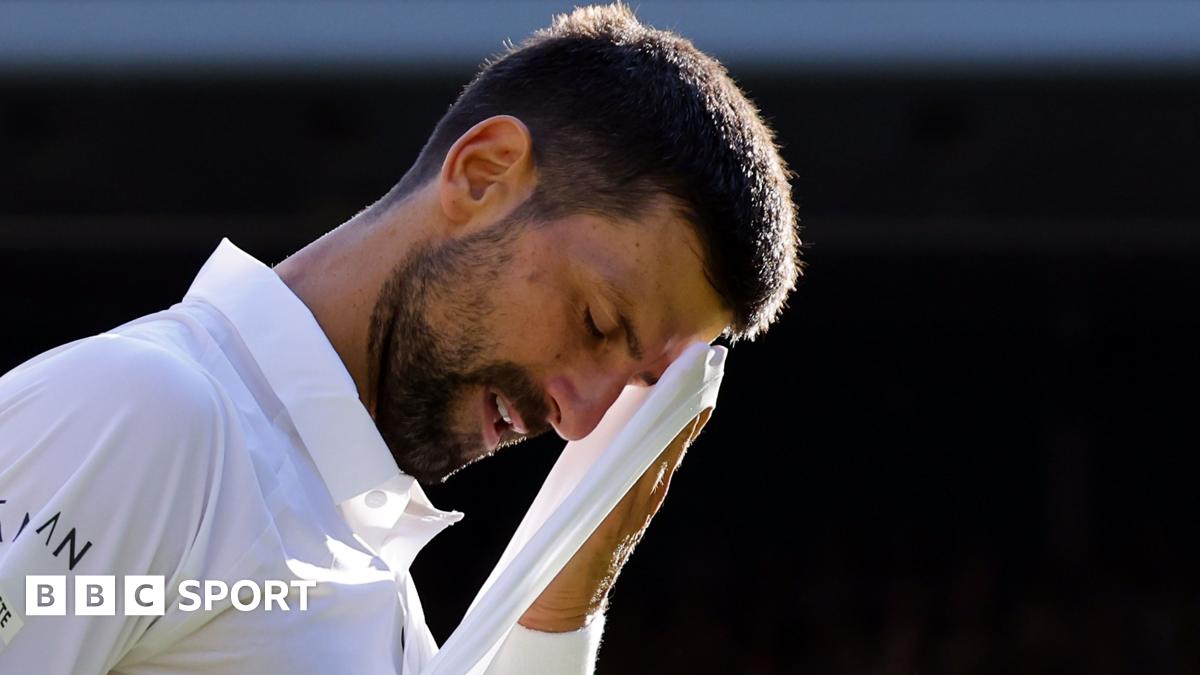
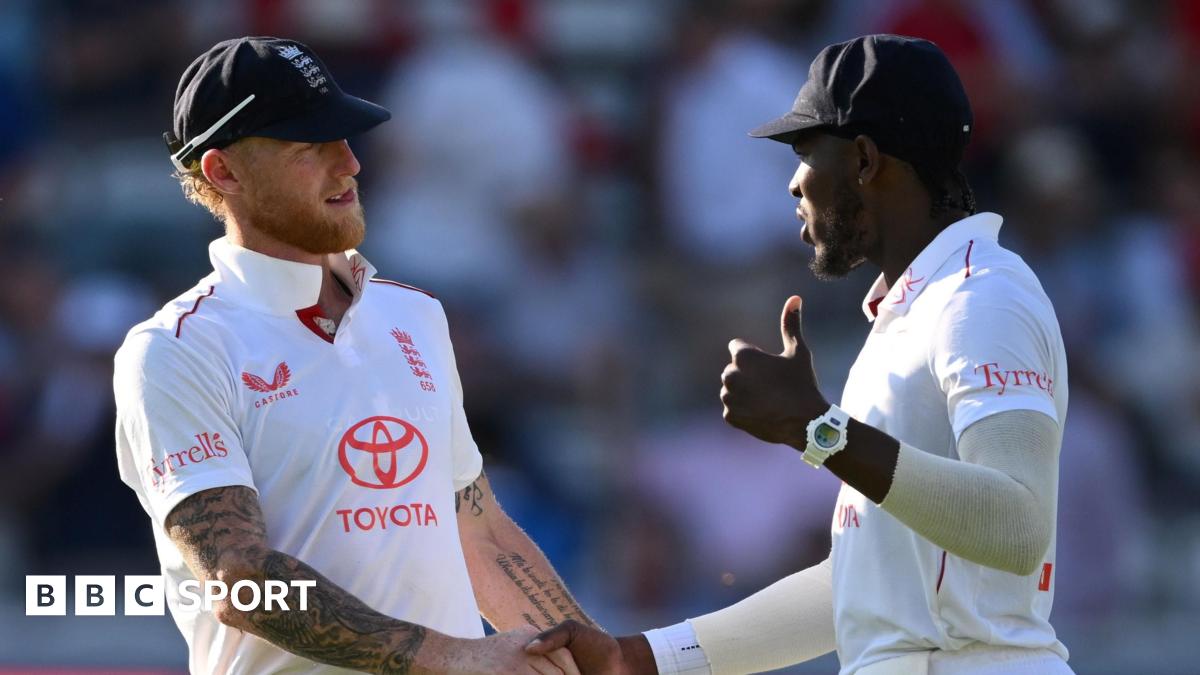





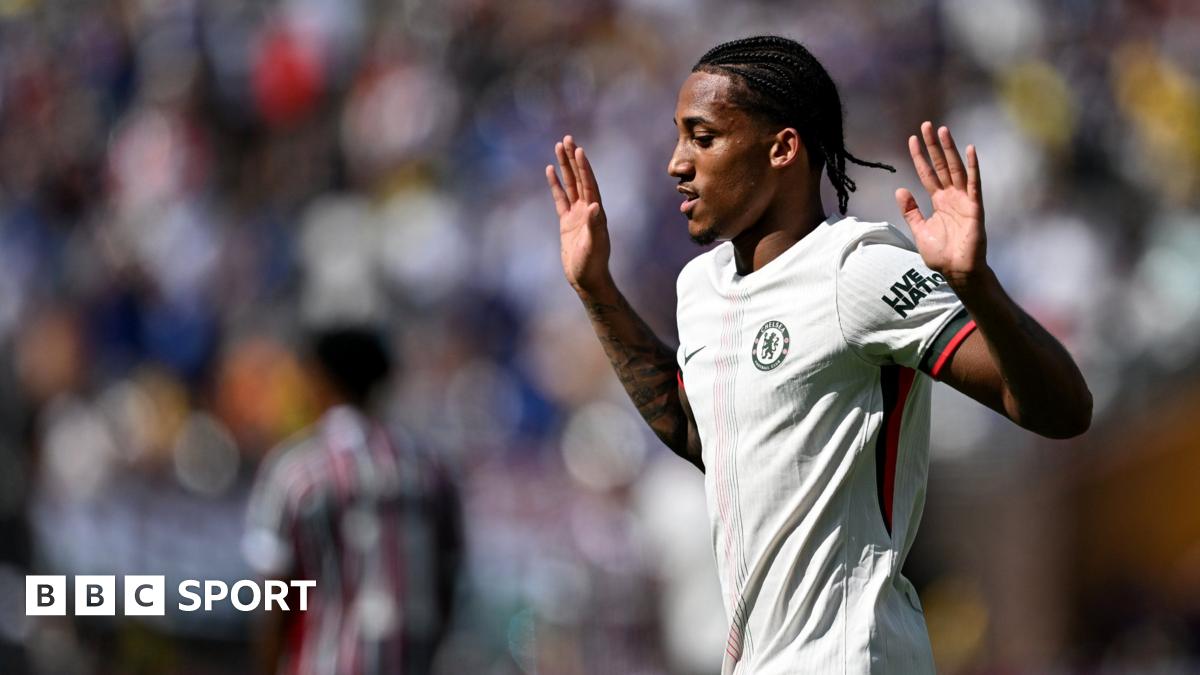
 English (US)
English (US)